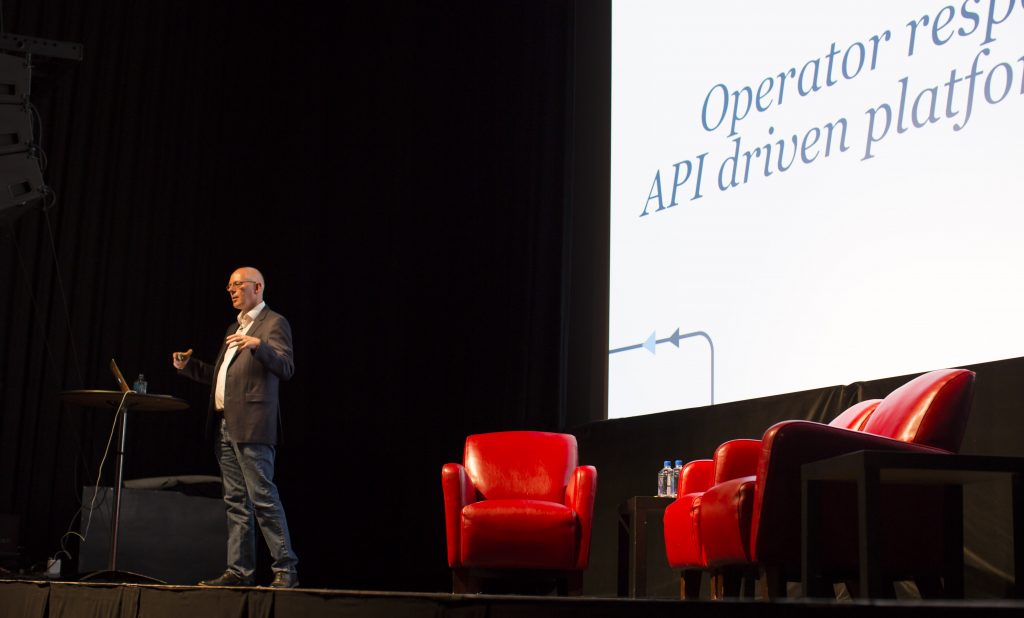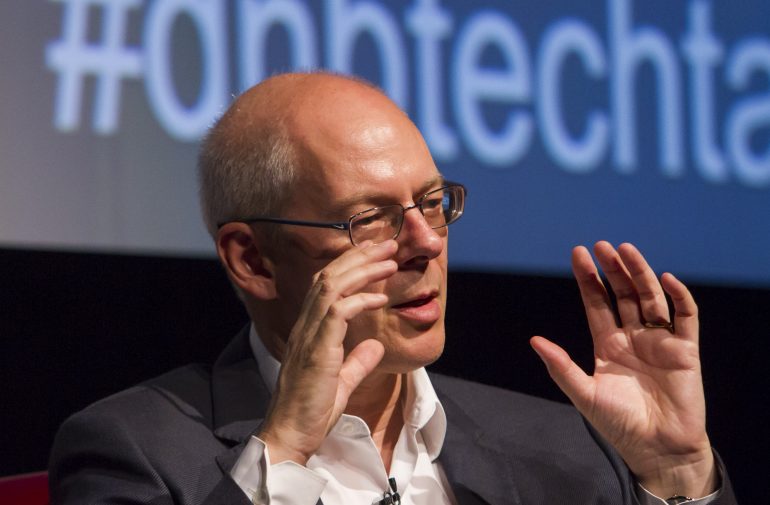Vancouver’s Dun & Bradstreet Cloud Innovation Centre recently hosted their first #dnbtechtalks event Future of Cloud Innovation Event. It was a standing room only turnout with 175 tech enthusiasts coming out to hear Adrian Cockcroft, the former Netflix chief architect of cloud services, founder of eBay Research Labs, and current leading technical fellow at Battery Ventures speak.
The night’s other big winners will be the five (between the ages six-17) girls able to attend the week long code camps in Vancouver with Girl’s Learning Code. These five scholarships have been made possible with a portion of ticket sales and a matching contribution from Dun & Bradstreet cloud Innovation Centre.
“The trick that Amazon found was that they had a personal relationship with people with a credit card. That was the way through.”
Having the opportunity to speak with Adrian Cockcroft about the cloud of yesterday, today, and tomorrow proved enjoyable and insightful. The cloud was a buzzy idea in the late ‘90’s. I remember the enthusiasm for ASP’s (Application Service Providers) and the early days of Salesforce.com. But cloud adoption and innovation felt like it was moving at a glacial speed until seemingly this past 5 years.
“15 years ago the people got the right ideas,” Cockcroft said. “We were talking about web services, remote access to applications, even the Internet of Things. Sun Microsystems at the time famously got way too ahead of itself too often – ‘this is where the world’s going to be’; but it’s not there yet. Sun had all of the right ideas, but couldn’t figure out how to take it to market.”
Cockcroft was working on the cloud with Sun at that time, and shared that “the problem was that they were selling to CIO’s at the enterprise and most didn’t want the cloud. The trick that Amazon found was that they had a personal relationship with people with a credit card. That was the way through.”
“When AWS got going it was a credit card personal sign-up model, where you could get something done personally without having to go through all of this procurement processes and talk with sales reps, and have your CIO involved,” Cockcroft continued. “That’s why startups did it, and that’s why it sort of came in as this stealth IT thing in large corporations that didn’t know they were doing it. That was one of the big missing ingredients. The rest of it was mostly just the technology maturing. The rise of open source helped as well. It was a collection of things coming together to make cloud work right.”

Kodak missed digital, EMI Records missed digital, Blockbuster dismissed NetFlix, and RIM dismissed Apple; I asked Cockcroft with the combination of digital media, hardware, and the cloud, who’s next to have their lunch handed to them?
Cockcroft said he sees government IT moving in a positive direction, noting, “there’s actually some amazing stuff happening in digital services where they’re taking the ideas out of the web-scale startup world and applying it. They’re doing programs for a few percent of what they’d previously cost with the massive multi-billion dollar projects to create a website that doesn’t look very interesting of usable. Government is going through this transition to an Agile & DevOps methodology, and getting away for it’s huge overblown waterfall, systems integrator project mentality. The UK has been driving that for a few year, and the US government is started doing it recently.”
It’s the big verticals of education and finance where disruption is not keeping pace. Cockcroft pointed out that “it used to be the most advanced thinking in the world happened in the universities, and now they’re behind. The most advanced thinking is happening outside. If you go to university you’re mostly learning old stuff. They’ve become trapped in this business model which is actually holding them back. They’re a commercial entity trying to make money. So they spend more money on their sports team than their research. You’re seeing the likes of Coursera nibbling away at the edges, but it’s still early.
“The other big area, is seeing how different bits of companies have been disrupted at different times. We’re starting to get SaaS applications built for the finance silo, for the CFO. We’re seeing the whole ERP space getting disaggregated and moved out to cloud vendors. If you look at where companies spend their money it’s slowly being picked off.”
“There’s kind of a herd instinct. As one company kind of breaks from the herd and is successful, the other will try to catch up.”
Cockcroft highlighted that some of the biggest banks in the world are really getting into cloud in a way that two or three years ago they weren’t, realizing that if they don’t, they’re going to get left behind. In contrast, the pharma and hospital markets are huge, but are trending as late adopters of these technologies; Cockcroft thinks they will get there eventually.
“There’s kind of a herd instinct. As one company kind of breaks from the herd and is successful, the other will try to catch up,” he said. “You’re seeing a little of that happening in finance right now where a few players are aggressively adopting much more modern development techniques, and becoming extremely agile and running things on AWS or options. I’m seeing some in finance questioning themselves as to why they’re building data centres when they actually have nothing to do with the business of banking.”
Cockcroft said that it’s about focusing on building applications and deploying technology, but having to own all of the infrastructure. “They’re starting to realize owning data centres isn’t a business differentiator. Running a data centre slightly better doesn’t make a bank better. It turns out today that the best data centre you can build is an AWS account. You can do more with it, it’s more reliable, more scalable, and you can start it up in seconds,” he said.
Cockcroft’s forecast for the future of the cloud is very clear. He concluded that “unless you’re maybe Facebook or Apple, most internal corporate data centres are just a mess of spaghetti, brokenness, and snowflake individually built machines with no uniformity. That’s the way they really are. It’s why the world’s top ten banks, for instance, have annual IT budgets of several billion dollars. Regularizing that into a cloud environment turns out to be a way forward.”
Images courtesy Ben Nelms.


